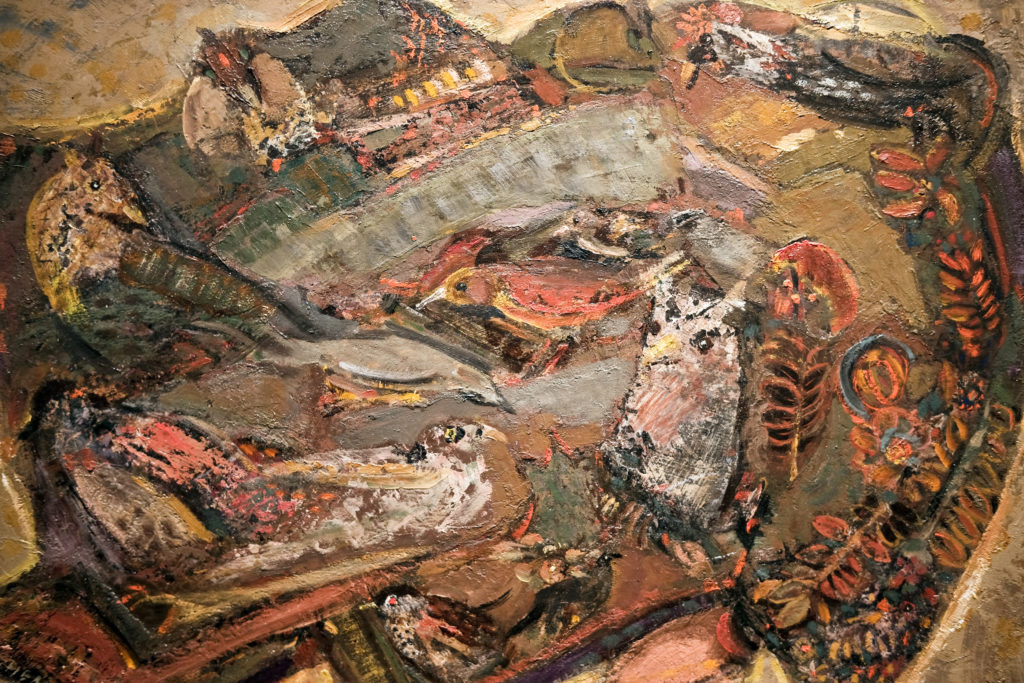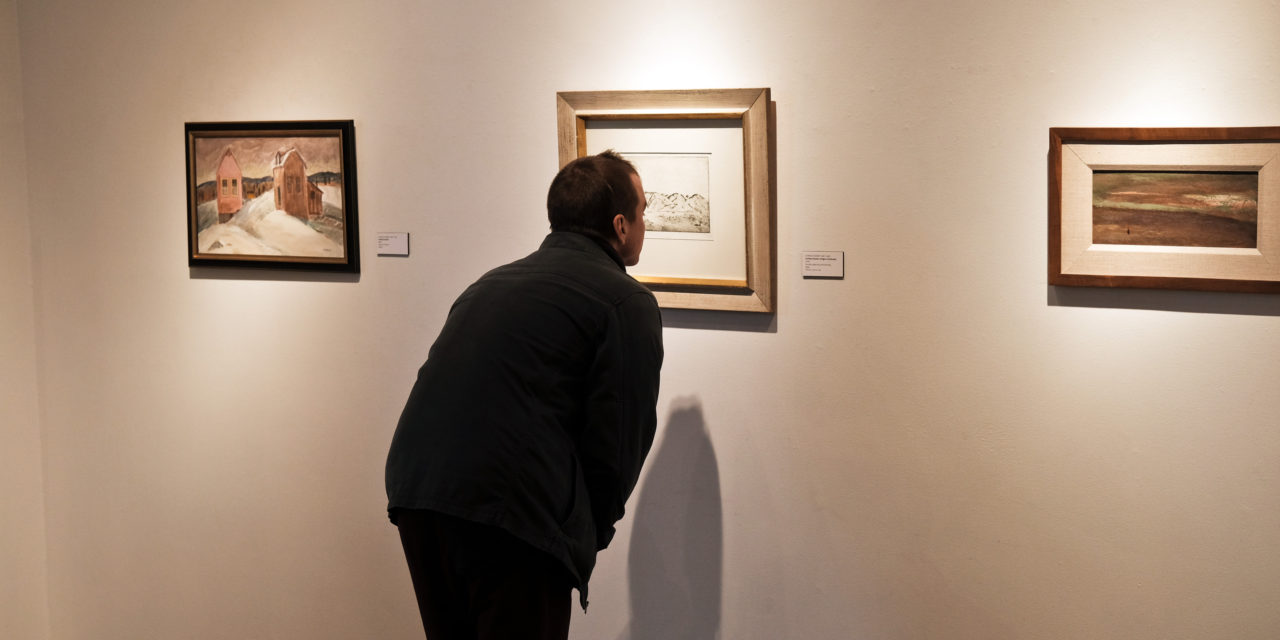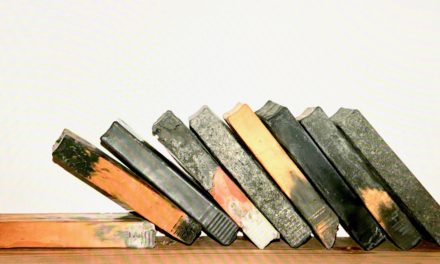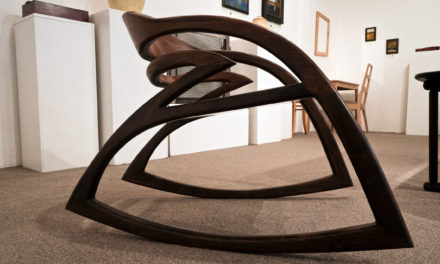(Above: A visitor to the Karin Clarke Gallery takes a close look at a Charles Heaney painting; photos by Paul Carter)
By Randi Bjornstad
Karin Clarke describes the latest display at her downtown Eugene art gallery — Charles Heaney (1897-1981): Northwest Master — as “the most substantial showing” of the artist’s work since a 2005 exhibit at the Hallie Ford Museum of Art at Willamette University in Salem.
“I have always thought it would be amazing to do a show like this; his work is so highly prized and collected,” Clarke said. “Through the years I’ve had three or four pieces in resale shows that I’ve done, but this time, thanks to being able to find some longtime collectors of his work — including one who was at the point of wanting to put some on the market — I have 24 pieces plus some unframed prints to show.”
As a testament to the strength of Heaney’s appeal, one buyer already had contacted her and arranged to purchase five of the pieces in the show by the time it opened on Feb. 27, Clarke marveled.
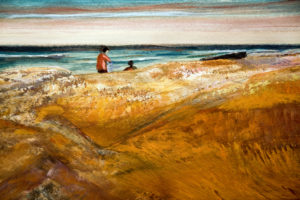
Heaney’s oeuvre definitely has a Pacific Northwest feel to it, ranging from a series of prints of Timberline Lodge that he created for the federal Works Progress Administration during the Great Depression, and later as portrait, still life, landscape and townscape studies drawn from his travels around the state.
In announcing the show, Clarke said people revere his work “for its expressive mood, which tends to be meditative, recollective, and at times melancholic.”
Heaney lived most of his life in Oregon, having moved west from Wisconsin at age 15 years with his mother and sister, shortly after his father’s death. At that point, the boy did not continue his high school work, instead going to work in a series of Portland factories before beginning an apprenticeship at the Brandenburg Engraving Company.
That decision led to his entree to the art world, allowing him later to transfer his skill in metal engraving to printmaking. His employer also encouraged him to study art at the Portland Art Museum School, now known as the Pacific Northwest College of Art.
Clarke said she doesn’t believe her her artist parents, the late Mark Clarke and Margaret Coe, knew Heaney personally, “but they certainly knew of him.”
“My mom said when she and my dad were young, they occasionally would have work in the same show as Heaney,” she said. “My mom said at that time, when a lot of Oregon artists were doing New York-style abstract expressionism, Heaney was interested in capturing the feelings and senses of Oregon — he and his work made her proud to consider herself a regional artist.”
At the same time, Heaney’s personal life may not have been as happy as he might have liked.
“My impression is that he was desperately lonely, and he never married or had his own family — he always lived with his mother and cared for her until she died,” she said. “I think you can sometimes feel a kind of sadness in his work.”
Heaney often painted with casein, a milk protein, on paper or board, as well as using oil. In the printmaking aspect of his art, he preferred aquatint, an etching process developed in France in the 18th century that results in a soft look resembling watercolor.
Charles Heaney (1897-1981): Northwest Master
When: Through March 30
Where: Karin Clarke Gallery, 760 Willamette St., Eugene
Gallery hours: Noon to 5:30 p.m., Wednesday through Friday; 10 a.m. to 4 p.m. Saturday
Information: 541-684-7963 or karinclarkegallery.com
